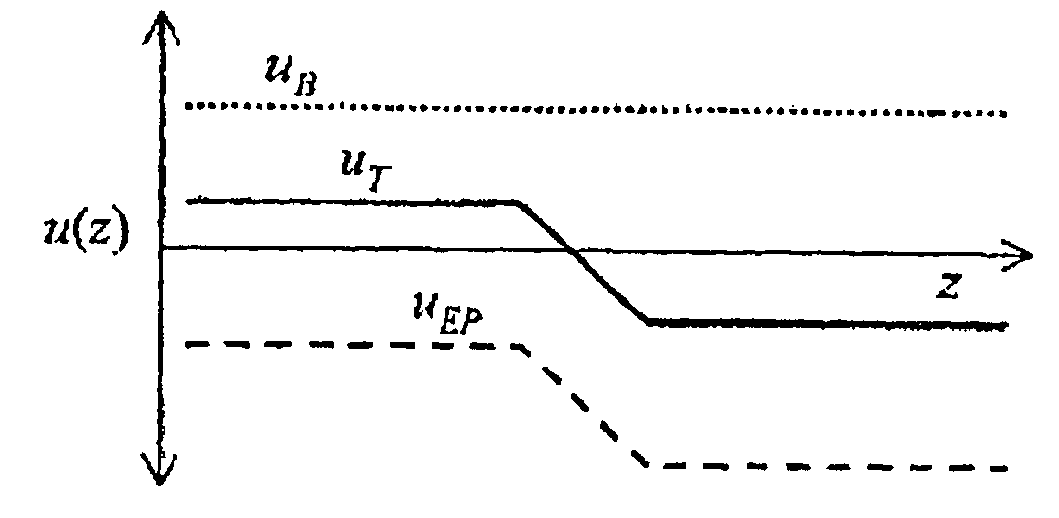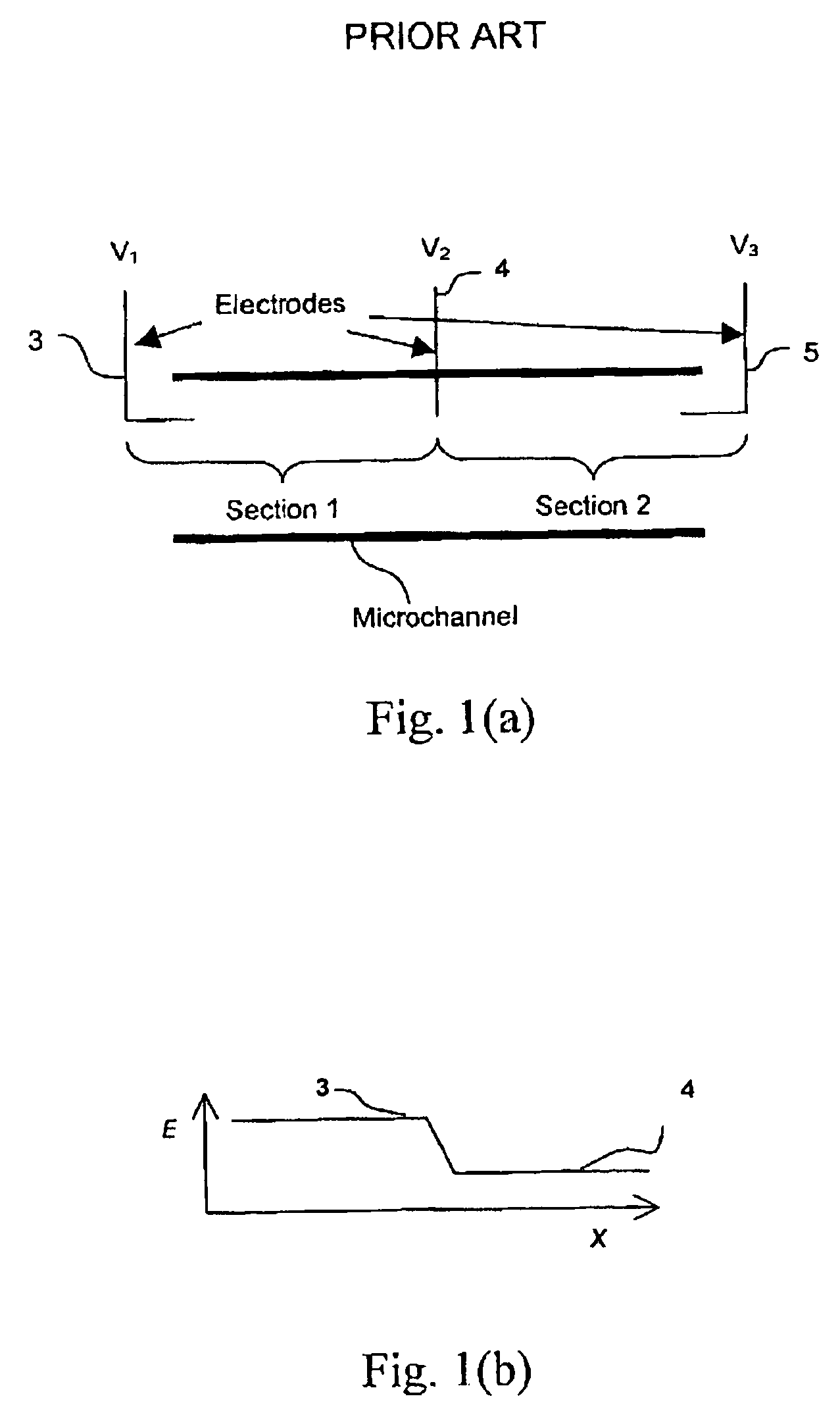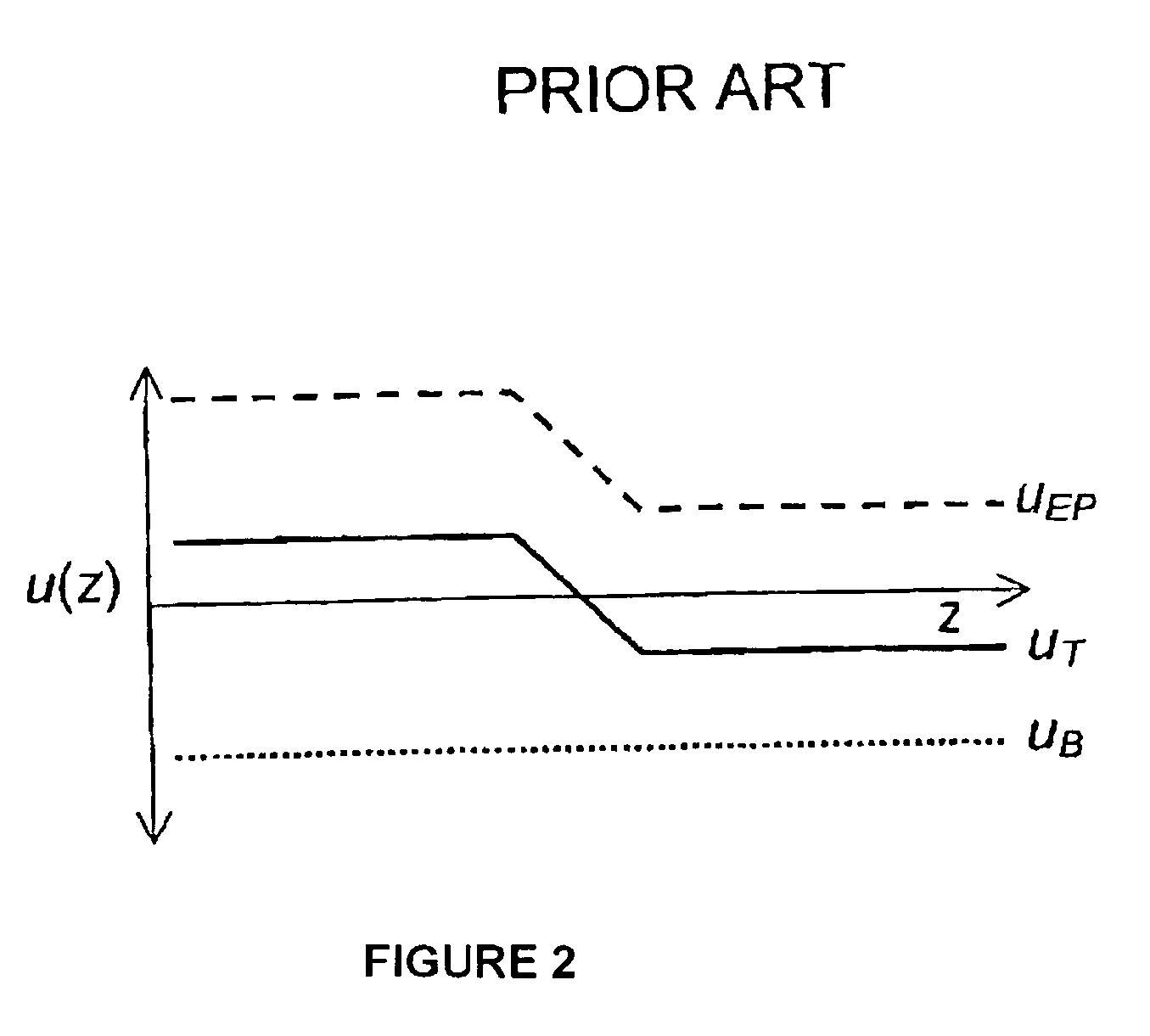Mixing reactions by temperature gradient focusing
a temperature gradient and mixing reaction technology, applied in the direction of fluid pressure measurement, liquid/fluent solid measurement, peptide measurement, etc., can solve the problem of difficult construction of microchannel devices, inability to achieve the maximum degree of material concentration increase theoretically, and inability to match extremely small quantities of sample materials
- Summary
- Abstract
- Description
- Claims
- Application Information
AI Technical Summary
Benefits of technology
Problems solved by technology
Method used
Image
Examples
Embodiment Construction
[0042]A material can be focused in a fluid conduit such as a channel or capillary when its total velocity is in opposite directions in different portions of the conduit, so that the material will move into the middle of the conduit and stop at a position where its velocity is zero. One way of accomplishing this is to cause the material to move with an electrophoretic velocity that varies along the length of the conduit. This can be accomplished by producing an electrophoretic velocity gradient along the conduit. If an electrophoretic velocity gradient is established, but the electrophoretic velocity is still in the same direction along the entire length of the conduit, a counter-balancing bulk flow can be applied to the fluid in the conduit, driven either by electroosmosis, pressure gradients, or both, so that the total velocity of the material, i.e., the vector sum of the bulk flow velocity and electrophoretic velocity of the material is equal to zero at some position along the con...
PUM
| Property | Measurement | Unit |
|---|---|---|
| width | aaaaa | aaaaa |
| width | aaaaa | aaaaa |
| length | aaaaa | aaaaa |
Abstract
Description
Claims
Application Information
 Login to View More
Login to View More - R&D
- Intellectual Property
- Life Sciences
- Materials
- Tech Scout
- Unparalleled Data Quality
- Higher Quality Content
- 60% Fewer Hallucinations
Browse by: Latest US Patents, China's latest patents, Technical Efficacy Thesaurus, Application Domain, Technology Topic, Popular Technical Reports.
© 2025 PatSnap. All rights reserved.Legal|Privacy policy|Modern Slavery Act Transparency Statement|Sitemap|About US| Contact US: help@patsnap.com



